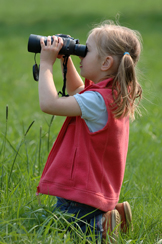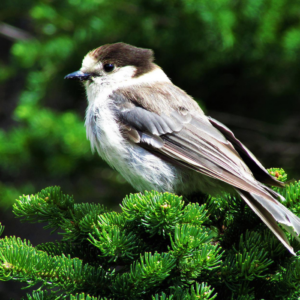What Are You Doing for International Migratory Bird Day?
Tomorrow is International Migratory Bird Day (IMBD) in North America. To help you make the most of the annual spring return of our feathered friends, we’ve come up with 12 tips to help beginner birders .
Don’t miss this great chance to learn more about the migratory bird species that are coming home to your area!
12 Bird Watching Tips for Beginners:

Tip #1 – Keep Your Eyes on the Bird
When you spot a bird, try to keep it in your line of sight for as long as possible. If you are using binoculars, practice bringing them up to your face while keeping your eyes on the bird. This can be harder than it sounds! Try practicing on other objects first if you’re having trouble.
Tip #2 – Know What to Look For
Once you have focused on a bird, look for:
- facial markings
- bill characteristics
- leg length and colour
- wing span
- tail shape
- flight patterns
- overall size and shape
- feeding habits
Tip #3 – Listen for Bird Calls
Listening for bird calls is one of the best ways to locate a bird. Keep your ears tuned to your surroundings and let your curiosity lead you to discover new bird sounds. Birding isn’t always just about seeing birds – it’s about enjoying them with all your senses! Visit Dendroica to listen to songs and see photos of birds in your area.
Tip #4 – Get to Know Your Local Birds and Their Habitat
There are many free resources on birds and birding – online and at your public library – which can enrich your birding experience. By learning more about bird species in your area, you can narrow the list of birds you might come across.
Tip #5 – Start in Your Yard
Watching birds in your yard is a fun, easy way to start birding. Luckily for us, many popular song birds visit backyard feeders and birdbaths. Having trees and bushes, as well as a bird feeder and bird bath, will make it more likely that birds will flock to your yard.
Tip #6 – Make Your Yard Bird-Friendly
You can take it one step further by consciously making your backyard bird-friendly. This doesn’t have to be expensive or time-consuming. Following simple “best practices”, such as planting native plants and providing a water source, can go a long way toward bringing birds to your yard. For more tips check out our 14 Ways to Make Your Backyard Bird-Friendly.
Tip #7 – Join a Bird Walk
Meet fellow birders by joining a bird walk or start your own with your birding buddies! Bird walks are a fun way for birders of all levels to get together and share their experience and knowledge. Don’t know where to look for local bird walks? A good place to start is by contacting your local bird watching organization or naturalist club. If you live in Canada, you can find a naturalist club through the Canadian Naturalist Network.
Tip #8 – Use a Field Guide
With its pictures and descriptions of birds, field guides can help you identify birds more easily. They come loaded with profiles for common birds in adult- and child-friendly formats.

Tip #9 – Know When to Look
Learning about the birds in your area will help you decide when to go birding. Some birds are only visible during certain times of the day. For example, songbirds are easier to see two to three hours after dawn, or just before sunset. Knowing when your local birds are feeding and active will make it more likely that you will spot them. As many birds migrate south during the winter, knowing what season or time of year they appear in your area is another factor to consider.
Tip #10 – Keep a Birding Diary
You might want to keep a bird checklist to record the birds you see every time you go birding, whether on vacation or just taking a walk through your local park. Contribute to bird conservation by sharing your bird checklist with eBird – as a citizen scientist, your data will help experts at the National Audubon Society and the Cornell Lab of Ornithology understand the distribution of birds in the western hemisphere and beyond.
Tip # 11 – Be a Responsible Birder
When you are out birding, it’s important to leave the area – and the birds and their young – undisturbed. Approach birds, their nests, eggs and habitat quietly and discreetly. Try not to disturb them when they are feeding. Birds can also go places where you may not be welcomed – please respect private property. But birds will often come to you, at home in your yard, or on a walk through nature. You don’t have to get in your car to go birding!
Tip #12 – Have Fun!



